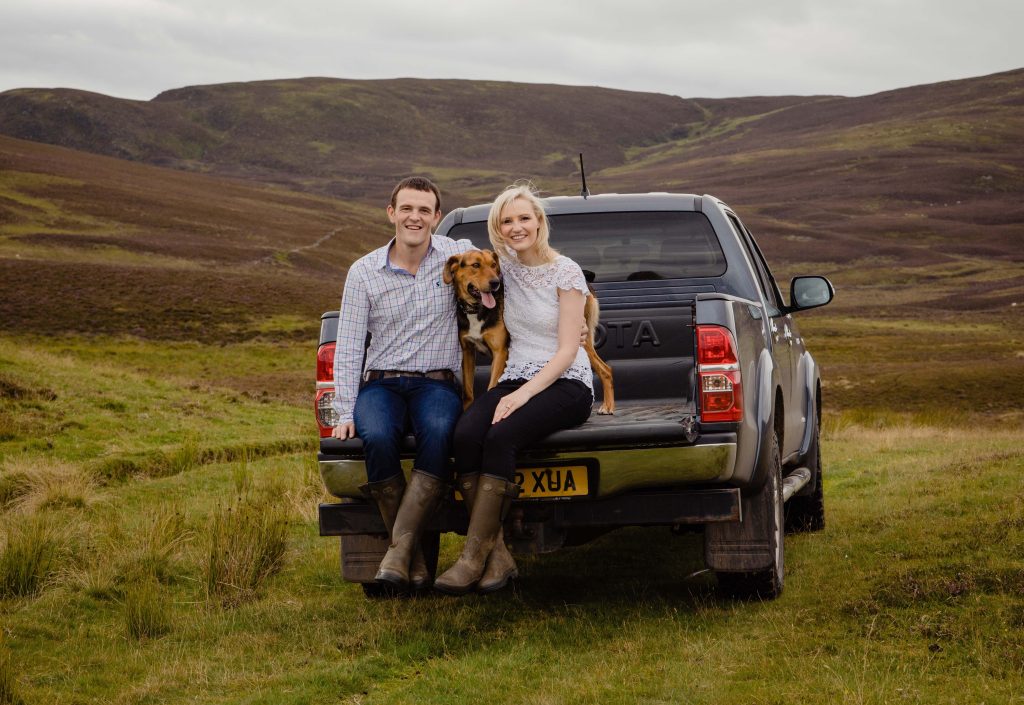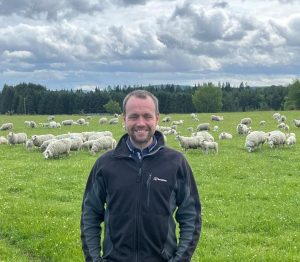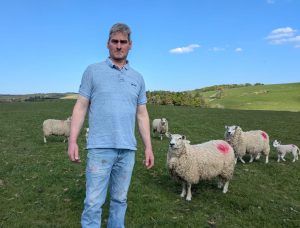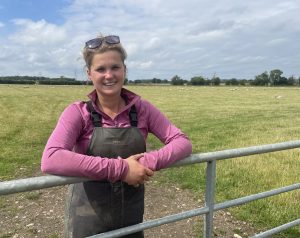with thanks to Andrew and family, Glenkilrie, Blairgowrie.
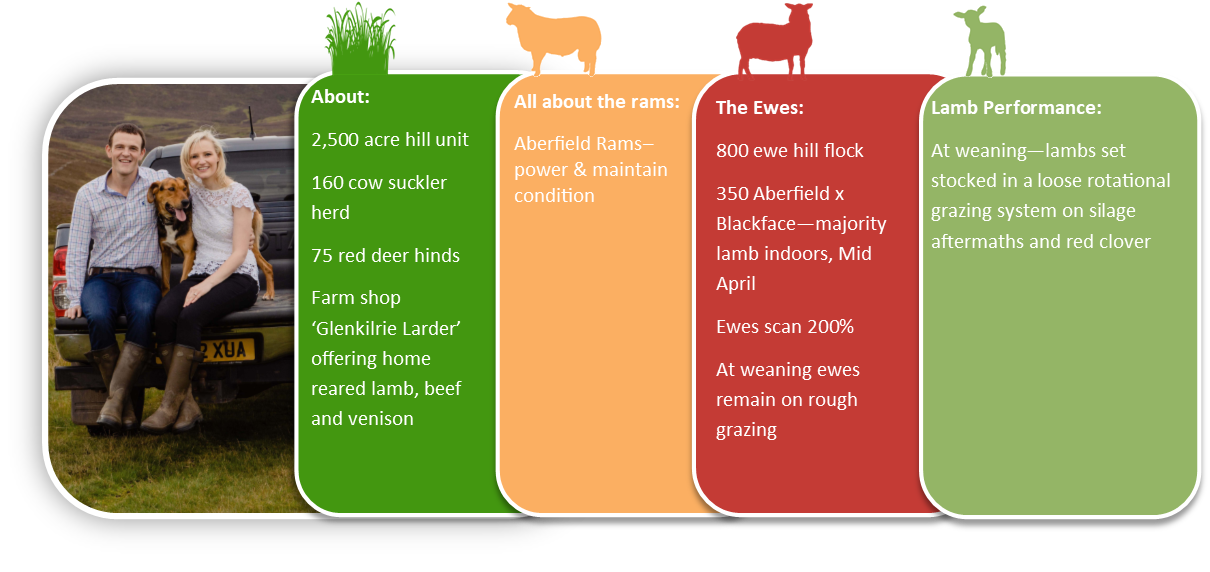
Adopting a flexible approach to maintaining a profitable sheep enterprise has paid dividends for the Perthshire based Houstoun family who identified investing in Innovis genetics a decade ago to provide a solution.
“Our objective for the sheep enterprise is to rear a profitable 19kg finished in spec lamb off grass for six months of the year, and we’ve succeeded by introducing the Aberfield to breed with a portion of our Blackface hill flock to produce a breeding ewe to cross with a terminal sire,” explains Andrew Houstoun.
“The Aberfield has introduced improved maternal traits – more milk, and they’re easier to keep; we’re now farming a lower input, more balanced ewe which is able to hold her flesh off forage and remain in good body condition.
“The ewes often scan closed to 200% and make a good job of their lambs,” says Andrew who farms Glenkilrie in partnership with his father, David and mother, Morag. The 2,500 acre hill unit based near Blairgowrie carries an 800 ewe hill flock and 350 Aberfield cross Blackface ewes together with a complementary 160 cow suckler herd and 75 red deer hinds.
“We operate in a climate where it’s hard to get labour, so I want to farm stock that are functional, do the job themselves and will work for me,” he explains. “We are currently phasing out our Blackface ewes for Cheviots, however Dad had the foresight to start investing in Innovis genetics over 10 years ago. He considered a lot had gone in to developing the performance recorded Aberfield – totally forage bred and reared.
“We’ve always run crossbreds and at the time, we had been breeding a Texel cross Blackface ewe to put to a terminal sire, however since we’ve phased them out and introduced the Aberfield, we’ve found a hardy, easier to keep option.
“We’re also impressed by the Aberfield’s good temperament and their survivability – the ewes last well on our system and the tups work longer than the previous Texels. The Aberfield tups also have power, and are capable of maintaining condition. In fact, we had a Blackface tup that wasn’t working so we opened the gate and he tupped another 100 ewes after his own group.”
Home reared lamb adds to the beef and venison mix offered to customers in Andrew and his wife Lauren’s farm shop, Glenkilrie Larder. “We sell three to four lambs a month during the season and while the volume is relatively small, we try to encourage customers to buy because it’s a damn good product.”
Andrew admits to remining open minded about progressing the sheep enterprise. “We currently lamb the majority of the Aberfield crosses indoors in mid-April, and turn them out within days, however we’re aware there’s a lot we could do to take costs out of the system, and going forward I think one approach would be to go all outdoor lambing.
He believes there is also huge potential to be had introducing paddock grazing to boost performance and productivity with appropriate infrastructure. At weaning the Aberfield ewes remain on rough grazing while the lambs are set stocked in a loose rotational grazing system on silage aftermaths and red clover.
“We believe we have the resources in our Aberfield cross ewes to introduce them to lower input systems and maintain output, while contributing to an even more profitable sheep enterprise.”
